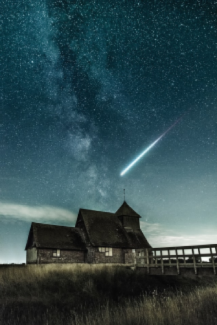When does Geminids Shower occur?
The Geminids meteor shower, which occurs between December 4 and December 17, is often regarded as the yearly meteorite shower a stargazer can witness. From 8 p.m. until 4 a.m., it is aired a live stream from a fireball camera at NASA’s Marshall Space Flight Center in Huntsville, Alabama, of a shower’s peak on Dec. 14-15 (changed dates from 13-14 due to weather).
3200 Phaethon, the Geminids’ parent, is both an asteroid or a lost comet, depending on who you ask. As soon as Earth passes over 3200 Phaethon’s dust trails or meteoroids, the dust burns up in the Earth’s atmosphere, resulting in the Geminids star shower.
What conditions need to satisfy for Geminids showers?
Because the shower’s peak coincides with an almost new moon, there will be deeper skies and no radiance to wash off the dimmer meteors, the Geminids Meteor Shower rate will be even better this year. The peak will occur from midnight of December 13 toward the morning of December 14, with some meteor action seen in the days leading up to and thereafter.
Where is Geminids shower orbit?
The orbits of every meteor connected with a shower are similar, and they appear to originate from the same spot in the sky, known as the radiant. The term “Geminids” comes from the fact that the Geminids Meteor Shower resemble to radiate from a point in the constellation Gemini.
What is the Geminids Shower trajectory?
What is the speed of Geminids? Geminids have a top speed of 78,000 mph (35 km/s). This is more than 1000 times quicker than a cheetah, 250 times faster than the world’s fastest car, and more than 50 times faster than a speeding bullet!
What is the best way to view Geminids Showers?
An infographic on the Geminids Meteor Shower based on meteor camera data from 2019. NASA is to thank for this. What is the best way to see the Geminids? Get away from strong lights, lie down on your back, and stare up if it’s not cloudy. Allow your eyes to acclimate to the darkness; you’ll see more meteors in this process. Please note, that this procedure can take up to 30 minutes. Don’t gaze at your phone screen at night because it will obstruct your eyesight!
Meteorites Fireballs can be observed throughout the sky in general. Avoid looking at the radiant since meteors near it have a small trajectory and are easy to miss. Try to trace a meteor backward when you see it. There’s a strong probability you’ve spotted a Geminid if you find yourself in the constellation of Gemini.
In December, how many Geminids might watchers expect to see?
For observers in the boreal hemisphere, their predicted rate is closer to 65 meteors per hour. At the peak of the shower, expect to see an average of one to two Geminids per minute over hazy skies. Watchers in the southern territory will view fewer Geminids than those in the northern hemisphere, with down as low as 25% of northern hemisphere rates, depending on latitude.

